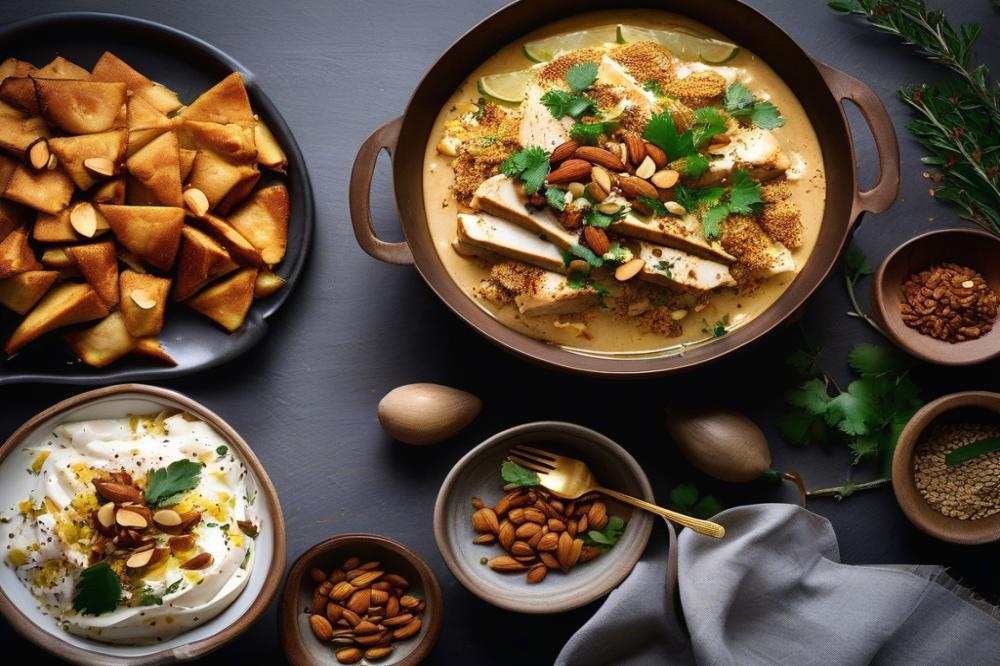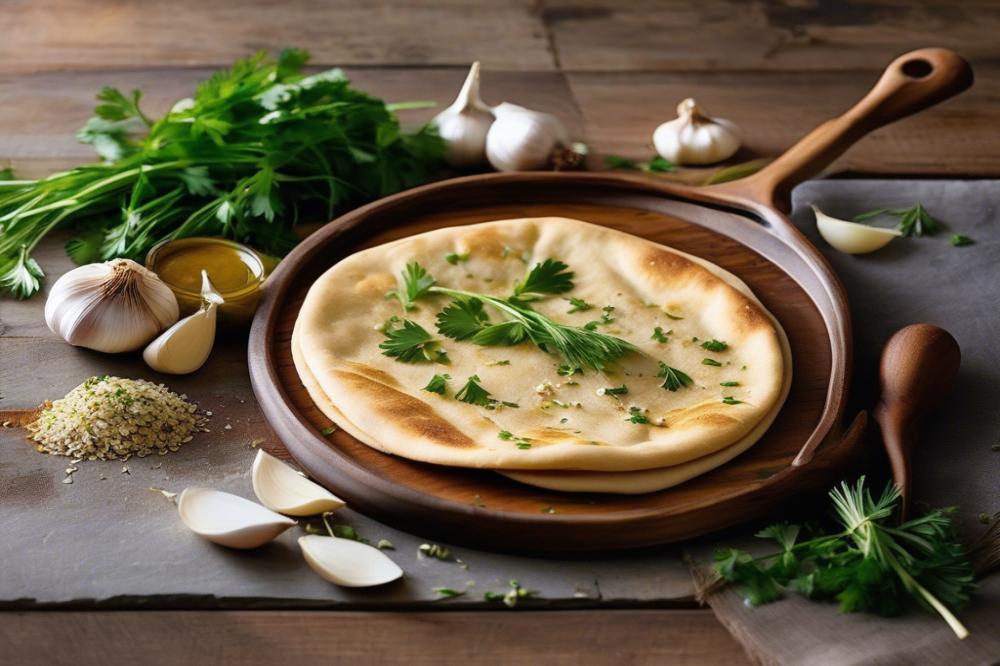Introduction
Lebanese cuisine is a treasure trove of flavors and traditions. Known for its rich and diverse dishes, it reflects a blend of cultural influences. Ingredients such as fresh vegetables, aromatic spices, and wholesome grains form the heart of many traditional Lebanese meals. Each dish tells a story, connecting people through food and memories.
Among these culinary delights, fatteh is a beloved choice in Middle Eastern dishes. This unique preparation combines layers of ingredients, often featuring toasted bread, flavorful meats, and a drizzle of yogurt. Its warm, hearty nature makes fatteh a staple on many tables. While variations exist, the essence remains—comfort and satisfaction in every bite.
The Chicken and Almond Recipe exemplifies this traditional approach. This delightful twist on fatteh combines succulent chicken with a nutty almond topping, creating a dish that is both nourishing and delicious. Whether enjoyed at a family gathering or a festive celebration, this easy fatteh recipe brings joy to all who partake. Understanding how to make fatteh opens the door to exploring authentic Lebanese flavors and experiences.
Join us as we delve deeper into the art of making this wonderful Lebanese chicken dish. Through each step, we will uncover the secrets behind creating not just a meal, but an experience filled with warmth and flavor.
Understanding Lebanese Fatteh
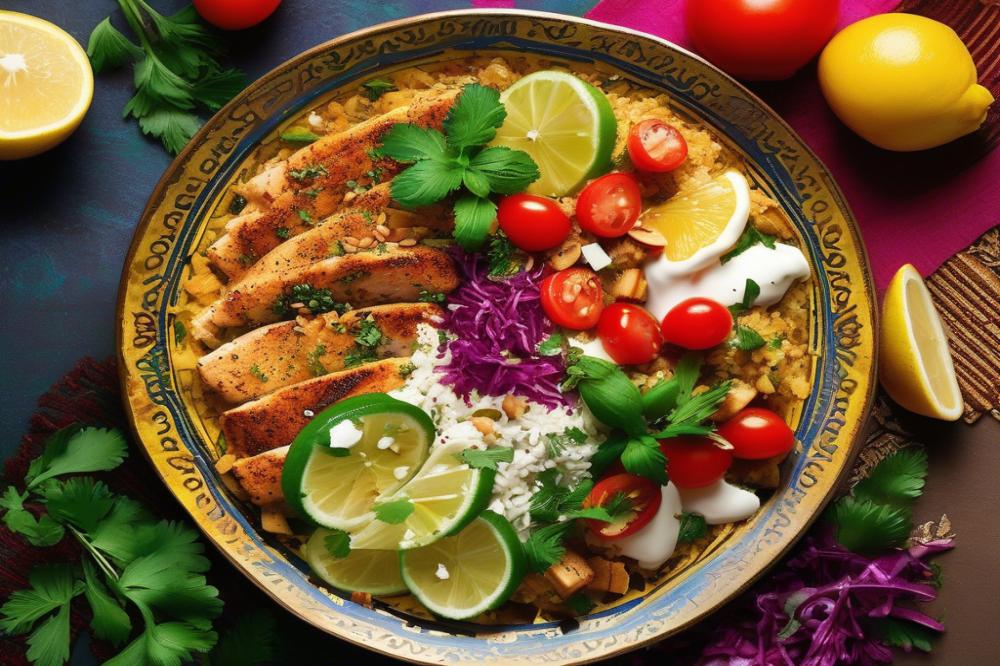
Fatteh is a dish that holds significant importance in traditional Lebanese food. It consists of layers of various ingredients, often combining rice, bread, yogurt, and meat. This dish reflects the rich heritage of Lebanese cuisine, showcasing flavors and textures that delight the senses. The fatteh recipe can vary widely, making it a versatile choice for many. It is not just food; it represents hospitality and warmth in Lebanese culture.
Several variations of fatteh exist, with chicken fatteh and almond fatteh being among the most popular. Chicken fatteh presents tender pieces of chicken, garnished with a sauce made from yogurt and tahini. Alternatively, almond fatteh utilizes crunchy almonds that add a delightful contrast to the softness of the other ingredients. Each version displays distinct characteristics, making them appealing in their own right.
Eating fatteh is often reserved for special occasions, gathering loved ones around the table. Family celebrations, weddings, and festive holidays are common settings for this Lebanese chicken dish. Serving it signifies not just nourishment but also a deep appreciation for community and togetherness. Many families enjoy preparing this easy fatteh recipe as a way to bond and create lasting memories. In many homes, fatteh is a symbol of comfort, merging taste with tradition in the realm of healthy Lebanese meals.
Knowing how to make fatteh can turn any meal into something extraordinary. It is a wonderful addition to any repertoire of Middle Eastern dishes. The layer of flavors in each bite can transport diners to the heart of Lebanon. Such a thoughtful dish truly embodies the essence of Lebanese culture and the joy of sharing food with others.
Ingredients and Cooking Instructions
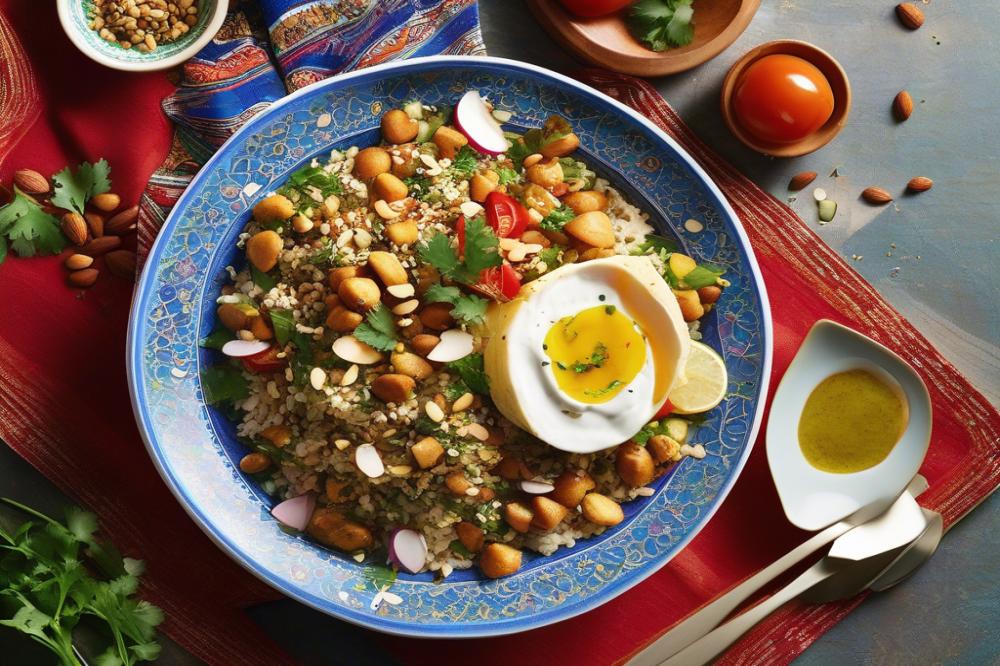
To create a delightful Lebanese chicken and almond fatteh, gather these ingredients:
- 2 cups cooked chicken, shredded
- 1 cup plain yogurt
- 1 cup toasted almonds
- 4 cups toasted pita bread, broken into pieces
- 2 tablespoons tahini
- 2 tablespoons olive oil
- 1 teaspoon garlic, minced
- 1 teaspoon ground cumin
- 1 lemon, juiced
- Salt and pepper to taste
Now, let’s explore the cooking steps for this delightful dish. Begin by toasting the pita bread. Get it golden and crispy. This adds texture. Next, take a bowl. Combine the yogurt, tahini, lemon juice, minced garlic, cumin, and season with salt and pepper. Mix until the ingredients are smooth.
The next task is to create the layers. Start by placing the toasted pita pieces at the bottom of a serving dish. It should make a great base. Evenly distribute the shredded chicken over the pita. Then, pour the yogurt mixture generously over the layers of chicken and pita. It should cover everything nicely.
For the finishing touch, sprinkle the toasted almonds on top as a garnish. They offer extra crunch. A drizzle of olive oil over the dish brings an added layer of flavor. This Middle Eastern dish is meant to be served warm. Enjoy every bite and relish this easy fatteh recipe.
Nutritionally, this wonderful chicken fatteh is packed with benefits. The protein comes from both chicken and yogurt. You’ll find healthy fats from the almonds and olive oil. Each bite delivers carbohydrates from the pita bread. Additionally, tahini and garlic add vitamins and minerals that enhance the meal. Enjoy this traditional Lebanese food as a healthy Lebanese meal.
Serving Suggestions
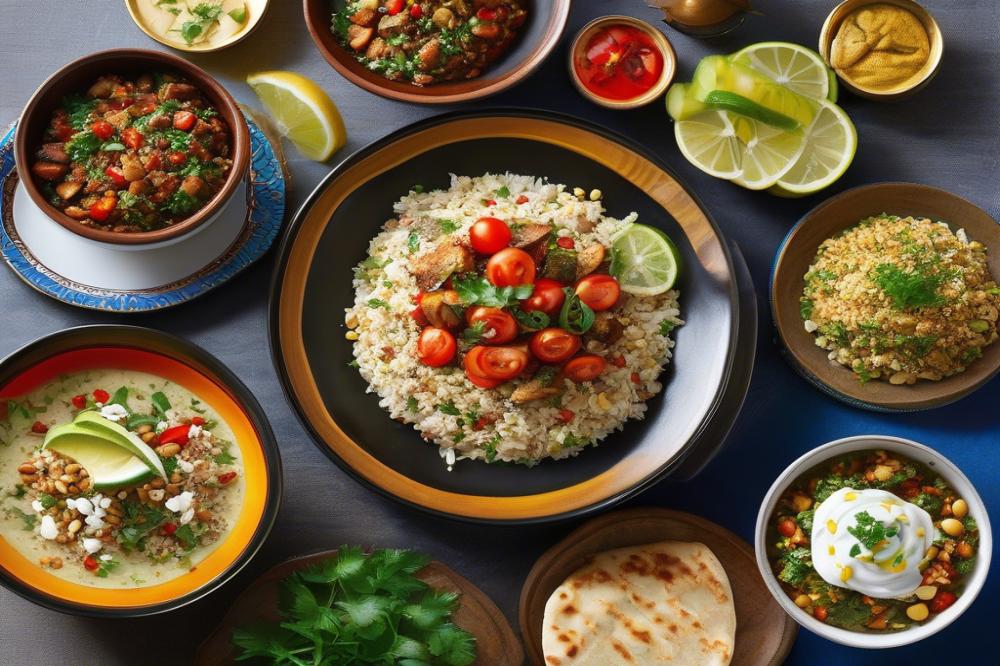
Ideal Pairings with Lebanese Chicken and Almond Fatteh
When serving Lebanese chicken and almond fatteh, think about what food complements its rich flavors. This chicken fatteh pairs nicely with creamy yogurt or a drizzle of tahini. Freshly baked pita bread also makes a delightful choice, as it’s perfect for scooping up the fatteh. Consider adding a side of spicy pickles for a zesty contrast. These additions enhance the dish while bringing balance to each bite.
Traditional Sides and Salads to Complement the Dish
Salads are a great way to brighten the meal. A refreshing tabbouleh salad made with parsley, tomatoes, and bulgur wheat can enhance the flavors of the chicken dish. You might also enjoy serving fattoush alongside. This salad’s crispy vegetables and tangy dressing make it a perfect match. Roasted vegetables provide additional nutrition and color to your table. For something more substantial, consider a side of rice garnished with nuts. This combination gives a delightful crunch to the experience.
Presentation Tips for Enhancing Enjoyment
To make the meal visually appealing, serve the chicken fatteh in a large, shallow platter. Arrange the chicken pieces on top of the almond fatteh in a beautiful pattern. A sprinkle of toasted almonds and parsley adds a pop of color and texture. Place extra yogurt and tahini sauce in small bowls on the side for guests to add as they wish. Brightly colored salads can be served in vibrant dishes to create an inviting atmosphere. Use decorative serving utensils to enhance the authenticity of the traditional Lebanese food. This culinary art not only pleases the palate but also engages the eyes.
Health Benefits of Lebanese Chicken and Almond Fatteh

Lebanese chicken and almond fatteh offers numerous nutritional benefits that cater to health-conscious diners. This delicious dish combines wholesome ingredients like chicken, almonds, and yogurt. Chicken is a great source of protein. It aids in muscle repair and keeps you feeling full. Almonds add healthy fats, providing energy while supporting heart health. The yogurt contributes probiotics, which promote a healthy gut.
Traditional Lebanese food places importance on fresh herbs and spices. These components are known for their anti-inflammatory properties. Additionally, garlic, a common ingredient, helps boost the immune system. Healthy Lebanese meals often incorporate vegetables, making the fatteh even more nourishing. Fatteh can be an easy way to enjoy a variety of textures and flavors in one dish.
Portion control plays a significant role in maintaining a balanced diet. When enjoying a bowl of chicken fatteh, consider the amount you serve. A small to moderate portion can satisfy cravings without overindulging. By adding a side of salad or vegetables, you can increase fiber intake while keeping the meal light. This approach enhances satiety and ensures you eat a nutritious meal.
Incorporating the easy fatteh recipe into a balanced diet is simpler than it seems. It fits well with various Middle Eastern dishes, allowing for creativity in meals. Consider swapping out ingredients like using whole wheat pita instead of white bread to boost fiber. Learning how to make fatteh with these adjustments can keep meals interesting and nutritious.
Overall, enjoying a flavorful Lebanese chicken dish like almond fatteh can be part of a healthy lifestyle. Emphasizing moderation and variety in meals leads to better health outcomes. Fatteh is not just a treat; it can be an essential part of wholesome cooking.
Bringing It All Together
Recapping the art of making Lebanese Chicken and Almond Fatteh reveals a culinary journey filled with tradition and rich flavors. Preparing this dish requires careful attention to detail. Each ingredient plays a crucial role in creating a delicious result. Roasted almonds add crunch, while tender chicken brings heartiness to the meal. The layers of yogurt and toasted bread further enhance the dish, creating a delightful texture. Enjoying this meal is not just about taste; it is about embracing a culture.
Exploring Lebanese cuisine through homemade recipes can be a rewarding adventure. Each recipe tells a story, connecting you to vibrant traditions and the people who share them. Making fatteh at home allows you to tweak flavors and customize your dish according to your taste. This exploration broadens your culinary horizons and deepens your appreciation for diverse flavors.
Enjoying traditional Lebanese food often creates opportunities for connection. Sharing meals with family and friends strengthens bonds. Food brings people together, sparking conversations and laughter. The act of preparing and sharing a meal nourishes both the body and the soul. In the end, it’s about community. The connections we form over food are lasting and meaningful. So, gather your loved ones, create a marvelous dish, and enjoy the experience together.

